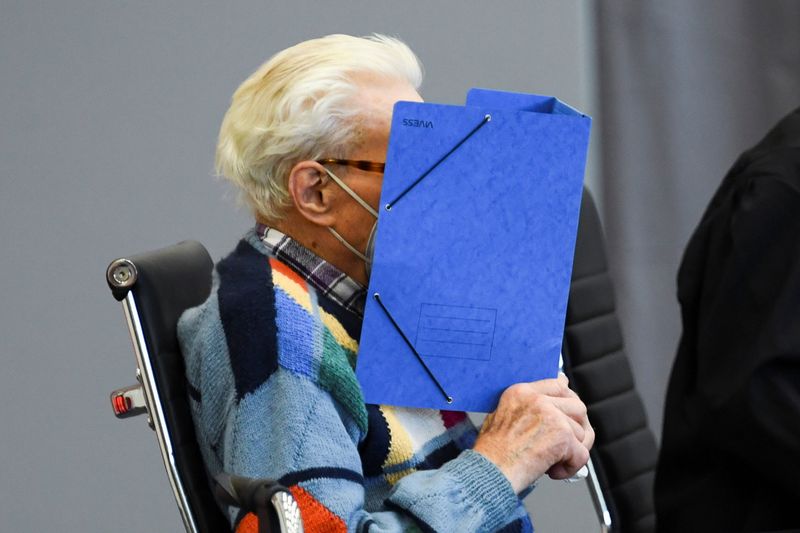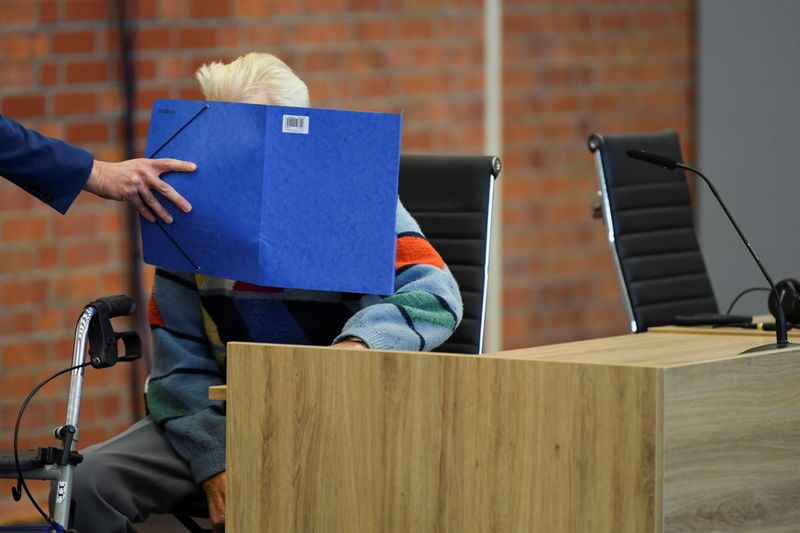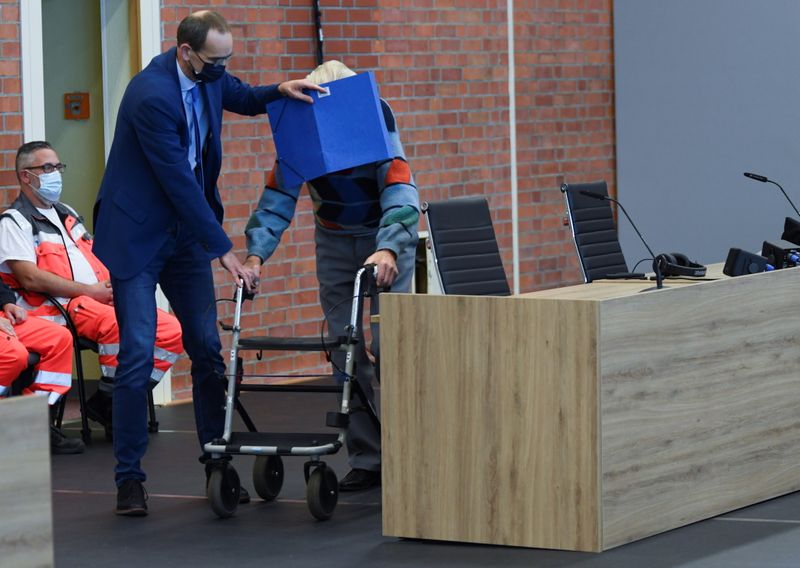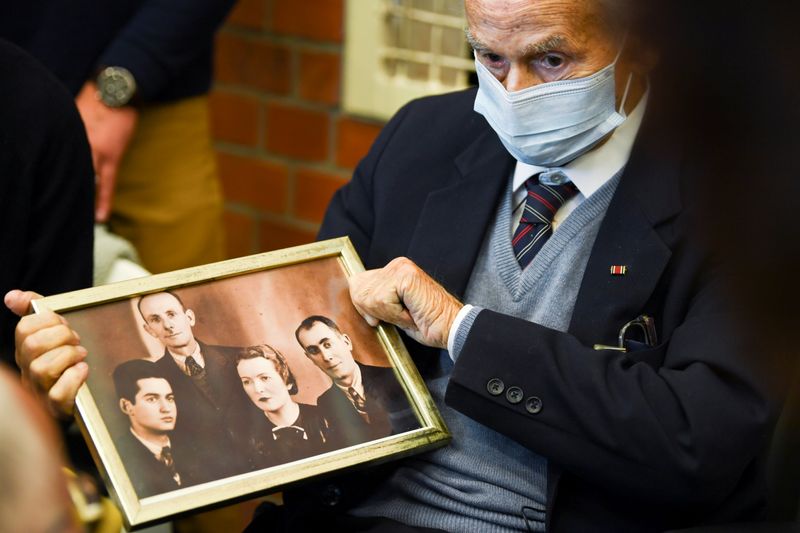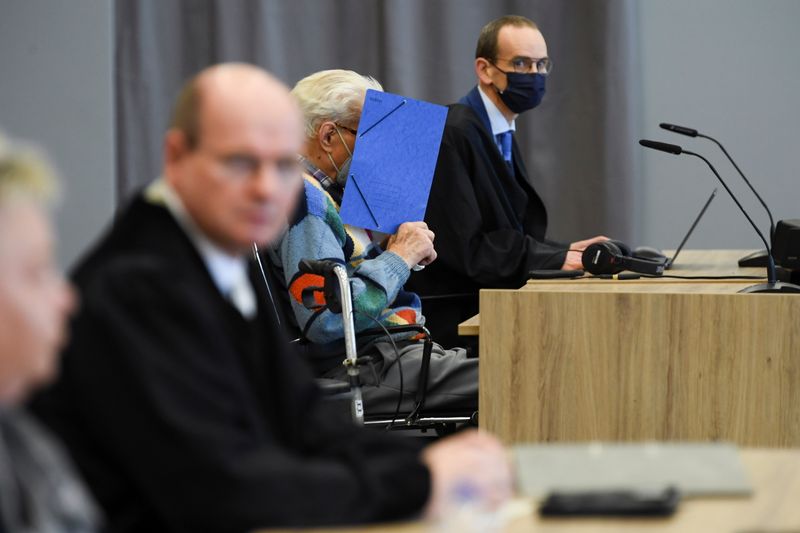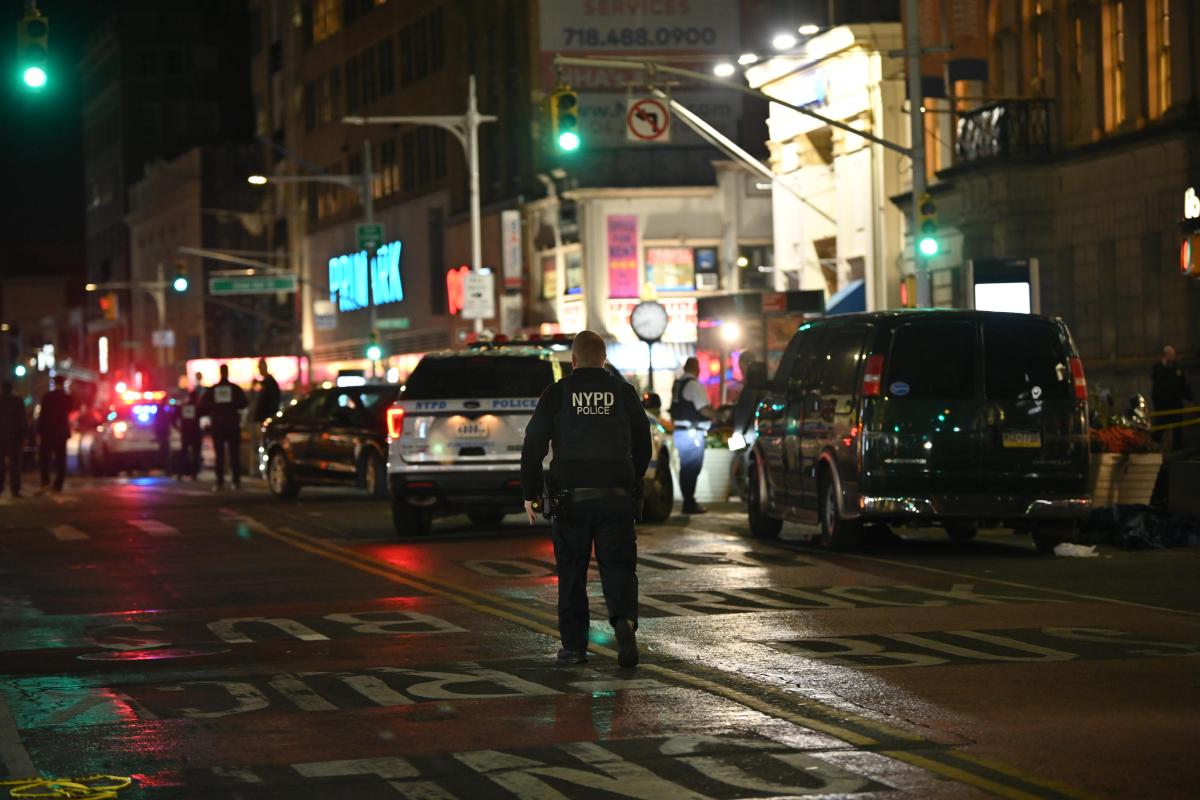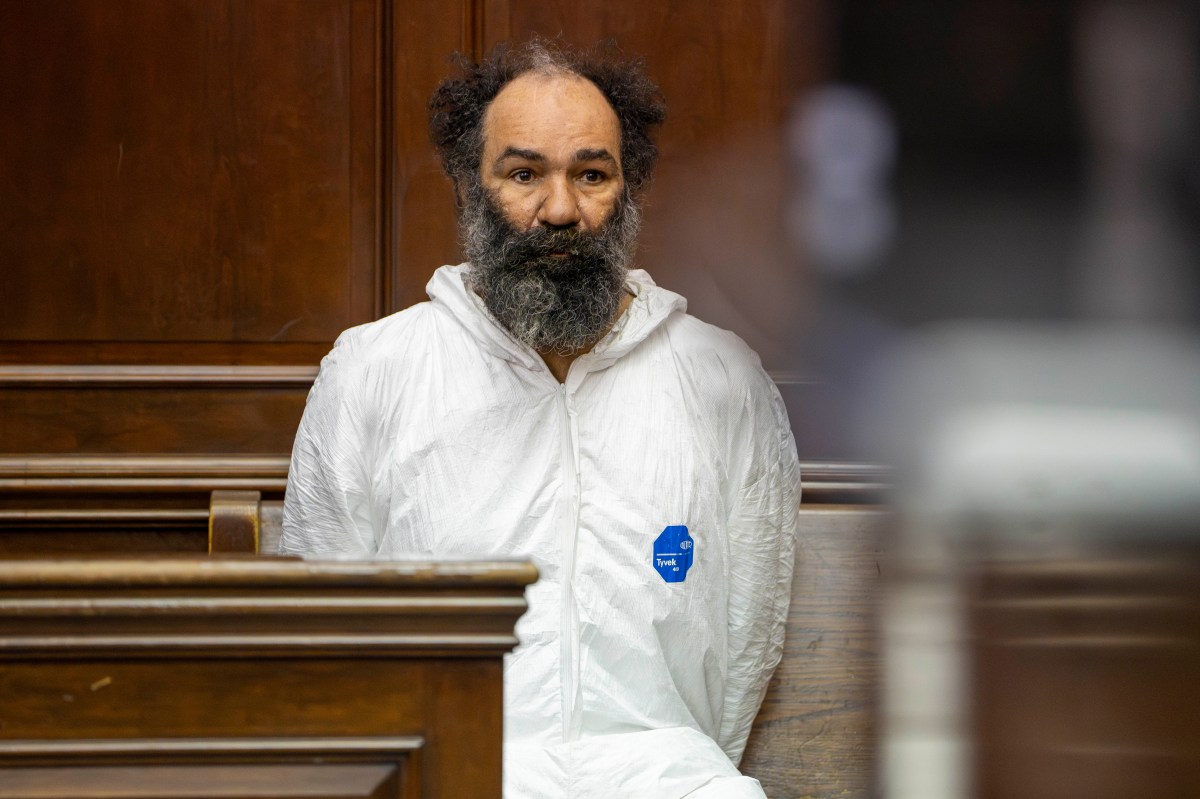NEURUPPIN, Germany (Reuters) – A former SS guard, now 100 years old, hobbled into a German courtroom on a walking frame on Thursday to face charges of helping to send more than 3,000 people to their deaths in a Nazi concentration camp during World War Two.
Prosecutors say Josef S., a member of the Nazi party’s paramilitary SS, contributed to the deaths of 3,518 people at the Sachsenhausen concentration camp by regularly standing guard in the watchtower between 1942 and 1945.
Doctors have said that the man, whose full name was not disclosed due to German trial reporting rules, is only partially fit to stand trial: sessions will be limited to just two and a half hours each day.
As the trial began, his lawyer held up a blue folder to conceal his client’s face as he was brought into the court in Neuruppin, near Berlin.
Some people interned in Sachsenhausen were murdered with Zyklon-B, the poison gas also used in other extermination camps where millions of Jews were killed in the Holocaust.
Sachsenhausen housed predominantly political prisoners from all over Europe, along with Soviet prisoners of war and some Jews.
“It’s a lot of emotion… I can’t really speak,” said Antoine Grumbach, 79, before turning abruptly away as he was overcome by tears. His father, a French resistance fighter, died in the camp.
Leon Schwarzbaum, who is 100 years old, sat quietly waiting for the trial to start in the courtroom, showing reporters a photo of him with his parents and uncle, who all died in Auschwitz.
Prosecutors accuse Josef S. of “contributing to cruel and insidious murders” by aiding in “creating and maintaining life-threatening conditions in the camp.”
There has been a spate of charges brought against former concentration camp guards in recent years for World War Two crimes against humanity. Last week, a 96-year-old former camp secretary went on the run https://www.reuters.com/world/europe/german-96-year-old-nazi-war-crimes-suspect-flees-ahead-trial-2021-09-30 the day her trial was to begin, but was caught by police a few hours later.
A 2011 court ruling paved the way for these final prosecutions, stating that even those who contributed indirectly to wartime murders, without pulling a trigger or giving an order, could bear criminal responsibility.
Sachsenhausen, opened in 1936 as one of the earliest Nazi concentration camps, acted as a training camp for SS guards who then went to serve elsewhere, including in Auschwitz and Treblinka. Others killed at Sachsenhausen included Dutch resistance fighters and the Nazis’ domestic political opponents.
(Writing by Thomas Escritt; Editing by Susan Fenton)

